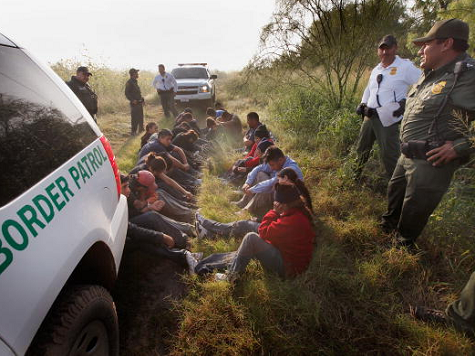
GOP nominee is pushing for a "third way" between mass amnesty and mass deportation.
The latest presidential poll out of Florida shows Donald Trump with a 2-point lead over Hillary Clinton. That may not seem like much but it’s a sharp reversal of earlier polls dating back to July. And it turns out that Trump’s renewed competitiveness with Florida’s Hispanics – he’s now trailing Clinton 50%-40% — is the main reason he’s back in contention. Earlier polls had him down in the same 20% range found in most other states.
Clearly something’s working in his favor again.
That something appears to be Trump’s long-promised “softening” of his position on immigration. Trump’s new campaign manager Kelly Anne Conway has been pushing the candidate to reposition himself on the issue – and with minority voters generally — or risk losing the November election. Trump’s basic message is that Clinton and the Democrats haven’t delivered on their promises to Latinos on immigration reform. Place your trust in me, he says, and I will deliver for you in a bigger way than you can imagine.
It’s a typically bold and grandiose Trump overture but it may just work – at least well enough for Trump to get back into the race. But it requires Trump to mount some high hurdles — and even risk alienating his core supporters. For example his new immigration policy is likely to include some version of an “amnesty” plan long opposed by GOP conservatives – and by Trump himself. The candidate’s been saying for months that he wants to force all illegal aliens out of the country. That stance helped him vanquish his GOP opponents in the primaries. Now he’s about to reverse himself – but not completely.
What Trump seems to have in mind is a renewed demand for a border wall combined with real leniency toward some – but not all — of the nation’s estimated 11 million illegal immigrants. Some critics point out that combining tough enforcement with some kind of legalization plan is not really that different from Obama’s own policy. Trump, surprisingly, has recently acknowledged as much, even referring to his revised plan as Obama’s policy “but with a lot more energy.”
Building a wall is certainly one way to demonstrate “more” energy. George W. Bush tried to build a double-reinforced wire fence along the entire US-Mexico border over a decade ago – but opposition from conservative landowners in states like Bush’s native Texas, made completion politically impossible. Bush scaled back the effort and also its rationale. The fence, he argued, was intended to force illegal immigrants to try to cross in more open sections of the border where they would be apprehended more easily.
Obama under pressure from his Latino base eventually refined – and probably undermined — Bush’s enforcement policy by ordering immigration authorities to limit their deportation efforts to “criminal” aliens, many of whom ended up being released anyway. He also reinstated a controversial “catch and release” policy at the border. Illegal immigrants who were apprehended were not taken into custody but were simply forced back into Mexico – which left them free to try to cross again.
Trump’s tough border wall policy may or may not be politically feasible beyond adding more border control agents and closing some of the more obvious remaining gaps in the current fencing. But symbolically, and optically, the idea of a huge wall – and ”getting Mexico to pay for it” – is emotionally satisfying to Trump’s hard-core supporters. It could keep them on board politically as the candidate tries to woo Latinos and moderates with some limited concessions on amnesty.
Trump actually has various options to choose from. For example, he could restrict legalization to those aliens who’ve been in the country at least five years – a stance that GOP moderates have advocated in the past. He could also add the requirement that illegals first return to their native country and formally apply to re-enter – in effect, “deporting” them but with the expectation that many, and even most, might return. He could also restrict legalization to a “green card” or just a temporary work permit without offering the automatic route to citizenship that Democrats demand.
What Trump’s saying, in effect, is that’s there’s a third way between mass amnesty and mess deportation, an alternative to the expansive Democratic party position aimed at securing millions of new voters and the harsh and largely unrealistic GOP vision of reversing the tide of mass illegal migration of the past few decades. Democrats will howl, of course, but Trump’s not pandering here, even if his “conversion” has come rather late in the game.
The more Trump moves in this direction, at a time when Clinton’s own candidacy is coming under renewed siege, the more likely he’ll get back in the race and demonstrate that he’s still a real threat to win in November.

UPDATE (August 31): Trump’s major speech on immigration at a rally in the must-win state of Arizona tonight focused almost exclusively on border security — “The Wall” — and was tougher in tone than many had expected. However, while emphasizing the need to expedite deportation of “criminal” aliens — and decrying the need for an “amnesty” — Trump largely punted on what to do about undocumented immigrants currently residing in the country who have not committed crimes, saying the issue might be discussed later, once the border was “secure”